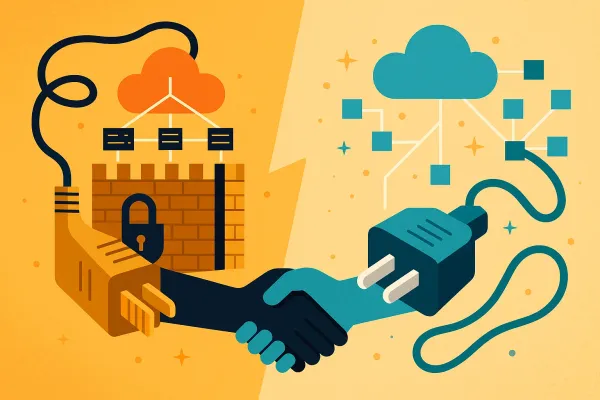Performance-Adjusted TCO: The Real Math Behind Choosing Your AI Network
The most expensive network isn't always the best. As open Ethernet closes the performance gap, the real math comes down to Performance-Adjusted TCO. When speed is equal, the lower cost of hardware and people becomes the deciding factor.

We've covered the technology, the protocols, and the strategic vendor wars. Now, we arrive at the question that every CFO and infrastructure leader ultimately has to answer: what is this all going to cost?
When you're building a multi-billion-dollar AI factory, the choice of network fabric has massive financial implications that go far beyond the initial hardware quote. For years, the economic debate was simple: InfiniBand was the expensive, high-performance option, and Ethernet was the cheap, lower-performance alternative.
That world is gone.
To understand the real math behind choosing your AI network today, you have to look beyond the sticker price and embrace a more sophisticated metric: Performance-Adjusted Total Cost of Ownership (TCO). It’s a concept that reveals why the network with the lowest TCO isn't just the fastest or the cheapest, but the one that delivers the most completed AI jobs for every dollar you spend.
CapEx: The Upfront Cost of Competition (or Lack Thereof)
Capital Expenditure, or CapEx, is the initial cash outlay for hardware. Here, the difference between a proprietary ecosystem and an open one is night and day.
- InfiniBand: Deploying an InfiniBand fabric means buying into a sole-sourced ecosystem. The switches, the Host Channel Adapters (HCAs), and even the proprietary cables all come from a single vendor. This lack of competition results in a significant price premium. A 2023 research paper estimated the per-server interconnect cost for a typical InfiniBand deployment at around $4,500.
- Open Ethernet: In stark contrast, Ethernet benefits from a massive, hyper-competitive, multi-vendor market. Switches, NICs, DPUs, and standard optical transceivers are available from a huge array of suppliers, which relentlessly drives down prices. The same 2023 study estimated the per-server cost for an equivalent high-performance Ultra Ethernet setup at around $2,800—a nearly 40% reduction in upfront hardware cost.
This isn't just a hypothetical. Market research firm Dell'Oro Group projects that Ethernet is on a clear path to overtake InfiniBand in revenue for AI networking by 2027, citing supply chain diversity and cost-efficiency as key drivers.
OpEx: The Hidden Cost of Specialized Knowledge
Operational Expenditure, or OpEx, is the ongoing cost to run and maintain the network. While power and cooling are huge factors, one of the most significant and often overlooked OpEx drivers is people.
This is Ethernet's hidden superpower.
Ethernet and the IP protocol it carries are globally ubiquitous. There is a vast, global talent pool of millions of network engineers who are trained, certified, and experienced in deploying, managing, and troubleshooting these networks.
InfiniBand, for all its technical prowess, is a niche, specialized technology. The pool of engineers with deep expertise in its unique architecture and management is orders of magnitude smaller, making them scarcer and more expensive to hire and retain. This "human element" represents a massive and ongoing operational advantage for Ethernet.
The Ultimate Metric: TCO / Performance = Real-World Value
So, Ethernet has a lower CapEx and a lower OpEx. Case closed, right? Not so fast.
The historical argument for InfiniBand's higher cost has always been that its superior performance delivered a better return on investment. The logic goes: the GPUs are by far the most expensive part of the cluster. If a more expensive network keeps those GPUs running at 95% utilization instead of 85%, it pays for itself many times over by completing more work. This is measured by Job Completion Time (JCT).
This argument is valid, but only as long as the performance gap exists.
This is the entire point of the Ultra Ethernet Consortium. The goal of UET, with its advanced packet spraying and flexible order, is to achieve performance parity with InfiniBand.
As that performance gap shrinks to zero, the TCO argument collapses. If two networks can complete the same AI job in the same amount of time, the one with the dramatically lower CapEx and OpEx becomes the undeniable economic winner.
This is the real math. You calculate the total cost over the life of the equipment, and you divide it by the performance it delivers. When the performance delta disappears, the cost delta becomes impossible to ignore. The economic tide is turning, and it's flowing decisively toward open, standards-based, high-performance Ethernet.



